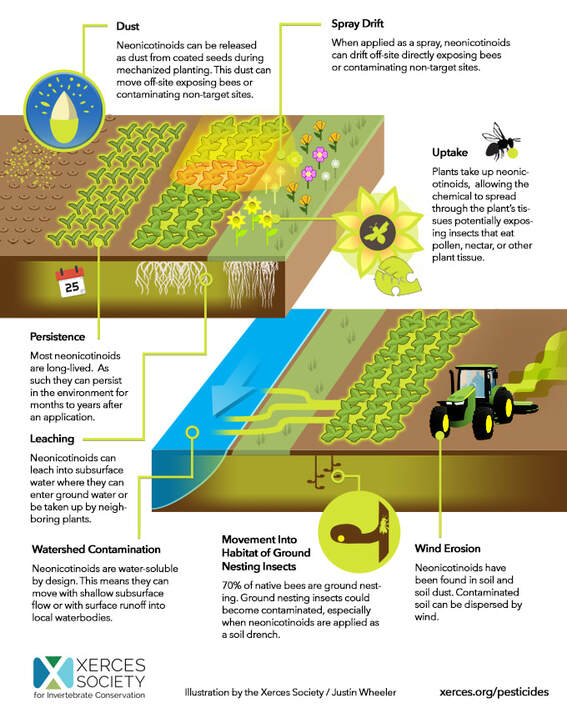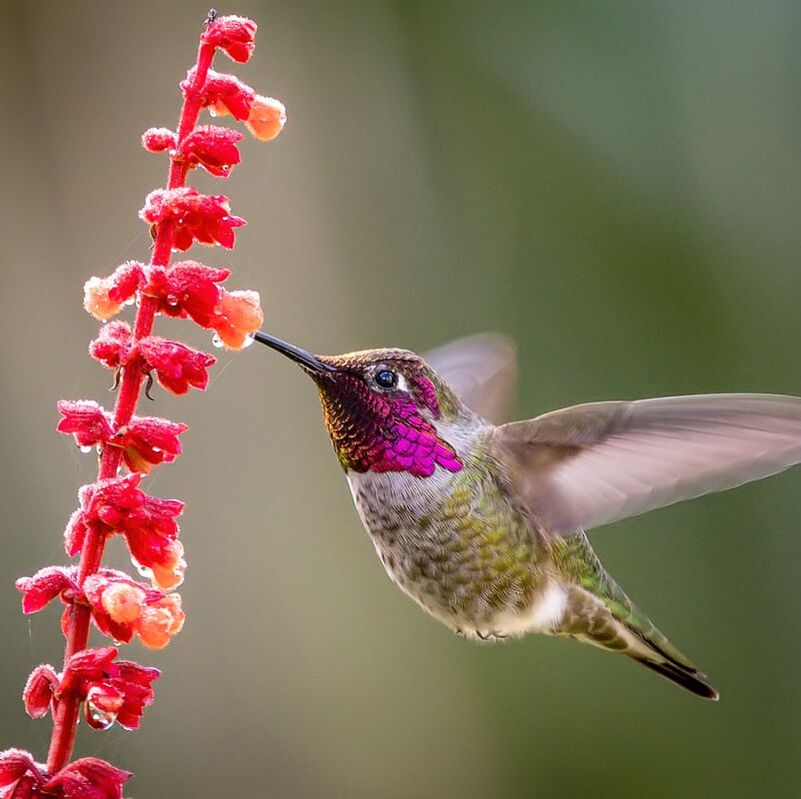More than 85 percent of flowering plants require an insect for pollination. Many of these plants provide food for birds and mammals; in fact, roughly one third of the food humans consume is due to the hard work of pollinator. Think about that: one out of every three bites of food you take exists because of pollinators like bees, butterflies and moths, birds, bats, and beetles! Unfortunately, pollinator numbers have been declining in recent years due to habitat loss, disease, parasites, and environmental contamination, leading to widespread ramifications on ecological processes.
The good news is, there are steps you can take to help ensure pollinators in our area have safe travel corridors, food, and shelter.
Plant Native Species
Planting native flowering plants and trees can attract pollinators and provide them the nutrients they need to survive. You can purchase plugs at our native plant sale, while packets of native pollinator seeds can be purchased year-round. Discover more about the flowering species native to your area here.
Add Variety to Your Garden
Providing a mixture of shapes, colors, and scents will help attract a more diverse range of pollinators. If you can, choose plants that will survive at different times of the spring, summer, and fall seasons. In early spring, shrubs and trees such as dogwood, blueberry, cherry, plum, willow, and poplar are good, nectar- and pollen-rich alternatives to flowers. A list of species blooming times can be found here.
Provide Nest Sites
Many species of bees and beetles are wood-nesting, making their homes, laying eggs, and raising their young in places like dead trees/branches, hollow stems, and fallen logs. If you have any of these in your yard, you can provide shelter to pollinators by leaving them be.
Provide a Source of Water
Just like people, pollinators need water to survive. You can make your yard more welcoming for these insects and animals by providing a source of water for them in the form of a shallow bowl or bird bath. Surface-level stones can be placed inside the water to providing a landing place for thirsty insects.
Avoid Pesticides
Not all creepy crawlies are bad! Spiders and insects like ladybugs, lacewings, and ground beetles are natural predators of garden pests; their presence is a sign of a healthy garden and doesn’t require any intervention.
If you do have an infestation, try to use organic deterrents such as garlic or chili pepper. Pests also tend to dislike herbs; planting parsley, sage, dill, thyme, lavender, etc. can act as a natural safeguard. As a last resort, if you must use a pesticide, avoid using neonics*, a class of neurotoxic insecticides which are particularly harmful to bees and other pollinators.
*Why are neonics so harmful?
The good news is, there are steps you can take to help ensure pollinators in our area have safe travel corridors, food, and shelter.
Plant Native Species
Planting native flowering plants and trees can attract pollinators and provide them the nutrients they need to survive. You can purchase plugs at our native plant sale, while packets of native pollinator seeds can be purchased year-round. Discover more about the flowering species native to your area here.
Add Variety to Your Garden
Providing a mixture of shapes, colors, and scents will help attract a more diverse range of pollinators. If you can, choose plants that will survive at different times of the spring, summer, and fall seasons. In early spring, shrubs and trees such as dogwood, blueberry, cherry, plum, willow, and poplar are good, nectar- and pollen-rich alternatives to flowers. A list of species blooming times can be found here.
Provide Nest Sites
Many species of bees and beetles are wood-nesting, making their homes, laying eggs, and raising their young in places like dead trees/branches, hollow stems, and fallen logs. If you have any of these in your yard, you can provide shelter to pollinators by leaving them be.
Provide a Source of Water
Just like people, pollinators need water to survive. You can make your yard more welcoming for these insects and animals by providing a source of water for them in the form of a shallow bowl or bird bath. Surface-level stones can be placed inside the water to providing a landing place for thirsty insects.
Avoid Pesticides
Not all creepy crawlies are bad! Spiders and insects like ladybugs, lacewings, and ground beetles are natural predators of garden pests; their presence is a sign of a healthy garden and doesn’t require any intervention.
If you do have an infestation, try to use organic deterrents such as garlic or chili pepper. Pests also tend to dislike herbs; planting parsley, sage, dill, thyme, lavender, etc. can act as a natural safeguard. As a last resort, if you must use a pesticide, avoid using neonics*, a class of neurotoxic insecticides which are particularly harmful to bees and other pollinators.
*Why are neonics so harmful?
- They can interfere with critical functions such as an insect's ability to navigate or reproduce. Research suggests that even low levels of exposure to neonics can impair bees' navigation, foraging ability, reproduction, and overall colony health. This has raised concerns about their long-term impact on bee populations and the stability of pollination services.
- They persist and accumulate in ecosystems. They are absorbed by plants and distributed throughout plant tissues (including nectar and pollen), resulting in long-term exposure for pollinators and non-target organisms like birds and fish as they make their way through the food web. Additionally, neonics can accumulate in the soil and water, posing risks to aquatic organisms and other wildlife.
- They can harm beneficial insects like natural predators and parasitoids, which help control pest populations naturally. When these beneficial insects are exposed to neonics, it disrupts the balance of the ecosystem and can lead to increased pest outbreaks.
- Some pests have developed resistance to neonics, leading to reduced effectiveness of these insecticides. This can result in increased usage or the use of alternative, potentially more harmful, insecticides.
- They have been linked to human health effects, including muscle tremors, reduced testosterone, and altered insulin regulation. Unfortunately, neonics can very easily contaminate drinking water, so even thorough cleaning of insecticide residue from produce doesn't ensure safety.






